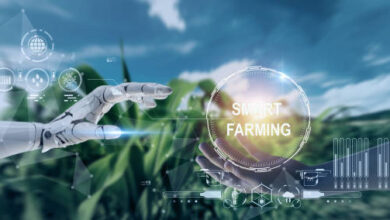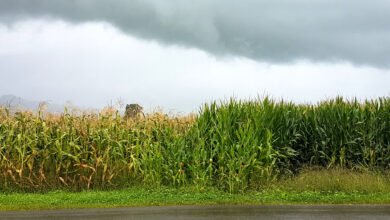
As a crucial industry since the dawn of civilization, agriculture holds a prime position in the economic and social fabric of societies. Beyond just providing food, agricultural products are a driving force behind economies worldwide. This blog post explores the economic impact of agricultural products, spotlighting their multifaceted influence on Gross Domestic Product (GDP), employment, trade balance, food security, environment, and the future of agricultural economics.
The Role of Agricultural Products in a Nation’s GDP
The economic influence of agriculture reaches far beyond the fields and pastures, significantly impacting a country’s GDP. Agricultural activities directly contribute to GDP through the production, sale, and export of crops and livestock. Every bushel of corn harvested, every head of cattle sold, adds to the nation’s economic output. But agriculture’s impact on GDP isn’t limited to just these direct contributions.
In addition to providing sustenance for a country’s population, agriculture also serves as the backbone for a multitude of agro-based industries. Industries such as textiles, leather, food processing, and even pharmaceuticals rely heavily on raw materials supplied by the agriculture sector. When cotton is spun into cloth, when corn is transformed into ethanol, when milk is turned into cheese, every step in these processes fuels economic growth and bolsters GDP.
In short, agricultural products act as a cornerstone of the economy, holding a far-reaching and profound influence on a nation’s GDP. The agriculture sector does more than just feed nations; it plays a key role in driving their economic growth and prosperity.
Impact on Employment and Livelihood (Agricultural Products)
The influence of agriculture permeates numerous spheres of life, one of the most prominent being employment. Agricultural practices, including farming and ranching, provide a significant number of jobs, both directly and indirectly, and are often the lifeline of many, particularly in regions marked by developing economies.
Agriculture is not just limited to cultivation and livestock rearing, it branches out into various sub-sectors, each opening up different avenues of employment. Activities like harvesting, processing, marketing, and distribution of agricultural products generate myriad job opportunities. In many parts of the world, agriculture is the backbone of the rural economy, creating work prospects for many who would otherwise have limited employment opportunities.
In addition to direct farming jobs, agriculture spawns employment in agro-based industries, such as food processing, textiles, and leather, which rely heavily on agricultural commodities. These industries not only create jobs for workers in factories but also for those in ancillary industries like transportation, warehousing, and retail. Thus, the ripple effect of agriculture on employment is far-reaching.
Agricultural activities also open up opportunities in the service sector. For instance, financial institutions offer a range of services tailored to the needs of farmers and ranchers, such as crop insurance, agricultural loans, and farming equipment financing. Similarly, the demand for agricultural research, advisory services, and training programs create jobs for scientists, consultants, and educators.
However, it’s also important to consider the quality and stability of agricultural employment. Many agricultural jobs are seasonal or part-time, and they often don’t offer the same benefits and protections as jobs in other sectors. Nevertheless, efforts are ongoing to improve working conditions and to create more sustainable and rewarding jobs in agriculture.

Influence on Trade Balance and International Relations (Agricultural Products)
In the arena of global commerce, agricultural products serve as important goods traded between nations, impacting not only trade balances but also diplomatic ties. Countries with a surplus of agricultural commodities for export often find themselves wielding a positive trade balance. This advantage supports the strength of their national currency and fosters economic stability, due to the inflow of foreign currency.
Agricultural exports also serve as a significant source of revenue for many countries, further stimulating economic growth. It can encourage investment in the agricultural sector, leading to technological advancements, increased productivity, and improved living standards for those involved in the sector. This, in turn, can foster national prosperity and societal well-being.
Trade in agricultural products also has a geopolitical dimension. It can foster ties and mutual interdependencies between nations, shaping the course of diplomatic relations. Countries can use the export of agricultural goods as a strategic tool, strengthening relations with important allies or influencing the policies of others. On the other hand, disputes related to agricultural trade can also lead to trade wars, affecting the global economy and international relations.
The flow of agricultural products
The flow of agricultural products across borders also has a significant impact on global food security. Countries that rely heavily on imported food are susceptible to changes in global food prices and market fluctuations. Conversely, nations that are major exporters of agricultural commodities can leverage this to their advantage, ensuring food security for their populations and influencing global food markets.
Finally, the international trade of agricultural products can also drive changes in farming practices worldwide. Countries seeking to increase their agricultural exports may invest in sustainable farming practices and technologies that increase yield and quality, further impacting the global agricultural landscape.
In essence, the movement of agricultural goods across international borders holds substantial influence over national trade balances, international relations, and global food security, highlighting the integral role agricultural products play in the global economic and diplomatic tapestry.
Contribution to Food Security and Standard of Living
Agricultural products stand as an integral part of the food security equation. By providing a consistent supply of food, the agricultural sector plays a vital role in feeding the global population. This not only satisfies hunger but also provides the energy and nutrition necessary for people to maintain their health and productivity.
Agriculture’s contribution to food security extends to all corners of the globe. In regions where access to food is a challenge, local agriculture can offer a lifeline, fostering community resilience and helping to combat hunger and malnutrition. Even in more developed regions, the presence of a strong agriculture sector aids in stabilizing food supplies and controlling food prices, thus ensuring that nutritious food remains accessible and affordable for all.
Moving beyond food security,
Moving beyond food security, the role of agricultural products in enhancing the standard of living is profound. Agriculture aids in lifting communities out of poverty and fostering economic growth, which directly impacts the quality of life. Increased income from agricultural activities can lead to improved living conditions, better access to education, and broader opportunities for economic development. Moreover, a stable supply of agricultural products allows for the diversification of diets, contributing to better nutrition and overall health.
Agriculture also plays a critical role in preserving cultural heritage and traditions. Many societies around the world are deeply rooted in agricultural practices that have been passed down through generations. These traditions not only provide a source of livelihood but also contribute to the cultural identity and sense of community among people.
The link between agricultural products and the standard of living is multi-faceted. From fostering food security to driving economic development, to preserving cultural heritage, the impacts are wide-ranging and significant. As the global community continues to grapple with challenges like poverty, malnutrition, and economic inequality, the role of agricultural products in improving standards of living remains more crucial than ever.
Agricultural Products and the Environment
While the benefits of agriculture in fueling economies, supporting livelihoods, and ensuring food security are extensive, it’s equally essential to consider its environmental footprint. The production and distribution of agricultural products can lead to notable ecological implications, which can have a knock-on effect on both agriculture and the economy over time.
One of the most significant environmental concerns tied to agriculture is deforestation. Forests are often cleared to make way for farmland, affecting biodiversity, disrupting habitats, and contributing to climate change through the release of stored carbon dioxide. This deforestation can create a negative feedback loop as a changing climate can, in turn, influence agricultural productivity.
Soil degradation is another major concern. Intensive farming practices, coupled with overuse of chemical fertilizers and pesticides, can lead to soil erosion, loss of soil fertility, and reduced crop yields. Over time, this degradation can result in a vicious cycle of falling agricultural productivity and escalating economic strain, especially in regions heavily dependent on agriculture.
Agriculture also plays a role in water pollution
Agriculture also plays a role in water pollution. Runoff from farms, carrying chemical residues from fertilizers and pesticides, can contaminate water bodies, negatively impacting aquatic life, and even seeping into human water supplies. This can have far-reaching consequences, from damaging ecosystems to increasing health risks, and even impacting industries reliant on clean water supplies.
Moreover, agriculture’s heavy reliance on water for irrigation contributes to water scarcity in many parts of the world. This places a strain not just on environmental resources, but also on economies and societies grappling with limited water supplies.
Finally, the role of agriculture in greenhouse gas emissions cannot be ignored. From methane released by livestock to carbon dioxide and nitrous oxide emissions from soil management practices, agriculture is a significant contributor to global warming. This, in turn, can cause erratic weather patterns, impact crop yields, and pose challenges for farmers and economies alike.
In essence, while agricultural products play an essential role in our economies, livelihoods, and food security, the environmental implications of their production and distribution need careful consideration. Sustainable farming practices, including organic farming, agroforestry, and efficient irrigation methods, can help mitigate these impacts, driving agriculture towards a path of sustainability that benefits both the economy and the environment.

The Future of Agricultural Economics
As we gaze into the economic horizon, the pivotal role of agricultural products is anticipated to undergo transformative shifts. Fueled by an expanding global population and shifting dietary preferences, the demand for these products is projected to intensify. This mounting demand, combined with the environmental challenges posed by traditional agricultural practices, necessitates innovative approaches to ensure the sustainability of agricultural economics.
New technologies are primed to revolutionize the way we produce and distribute agricultural products. From precision farming techniques that utilize GPS and remote sensing technology to monitor crop health and optimize inputs, to biotechnology innovations that enhance crop resilience to pests and diseases, the future of agriculture is steeped in technological advancements. These innovations could significantly boost agricultural productivity, contributing to economic growth while also mitigating environmental impacts.
The future of agricultural economics
The shift towards sustainable agriculture is another prominent trend set to shape the future of agricultural economics. Recognizing the environmental implications of traditional farming, many economies are beginning to transition towards more sustainable farming practices. Organic farming, permaculture, and agroforestry are gaining traction, presenting new economic opportunities while also safeguarding the environment.
In addition, the integration of agriculture with other sectors of the economy is predicted to strengthen. The burgeoning bioeconomy – where agricultural products are utilized for energy, bioplastics, and pharmaceuticals – holds vast economic potential. This not only diversifies income streams for farmers but also drives innovation, creates new jobs, and contributes to a circular and sustainable economy.
However, this future is not without its challenges. Addressing issues such as access to technology, market fluctuations, land rights, and the impacts of climate change will be crucial. The agricultural sector will also need to attract and retain a new generation of farmers equipped with the skills and knowledge to navigate this rapidly evolving landscape.
In conclusion, the future of agricultural economics is a dynamic blend of opportunities and challenges. As we stand at the cusp of this exciting future, it is critical that policies and practices support sustainable growth and resilience, ensuring that agricultural products continue to play their vital role in the global economy.






It’s really a great and useful piece of information. I am satisfied that you just shared this helpful info with us. Please stay us up to date like this. Thanks for sharing.
I believe this is among the such a lot significant info for me. And i’m glad studying your article. But wanna observation on some general issues, The site taste is great, the articles is truly great : D. Just right job, cheers
I do not even know how I ended up here, but I thought this post was good. I don’t know who you are but certainly you’re going to a famous blogger if you aren’t already 😉 Cheers!
Do you have a spam issue on this blog; I also am a blogger, and I was wondering your situation; we have created some nice methods and we are looking to swap techniques with others, be sure to shoot me an email if interested.
I’m very happy to read this. This is the kind of manual that needs to be given and not the random misinformation that is at the other blogs. Appreciate your sharing this best doc.
Thanks for the sensible critique. Me and my neighbor were just preparing to do a little research on this. We got a grab a book from our local library but I think I learned more from this post. I’m very glad to see such wonderful info being shared freely out there.
Hey there I am so grateful I found your website, I really found you by accident, while I was looking on Bing for something else, Nonetheless I am here now and would just like to say thanks for a remarkable post and a all round thrilling blog (I also love the theme/design), I don’t have time to read it all at the minute but I have book-marked it and also added your RSS feeds, so when I have time I will be back to read more, Please do keep up the awesome job.
fantastic post.Never knew this, appreciate it for letting me know.
What Is Sumatra Slim Belly Tonic? Sumatra Slim Belly Tonic is a natural formula that supports healthy weight loss.
What Exactly is Tonic Greens? Tonic Greens is a dietary supplement that has proven effective in helping many people manage the herpes virus and boost their immune systems without adverse effects.
About GlucoTrust. GlucoTrust is a natural supplement that promotes normal blood sugar levels.
It’s perfect time to make some plans for the future and it’s time to be happy. I’ve read this post and if I could I desire to suggest you some interesting things or tips. Perhaps you can write next articles referring to this article. I desire to read even more things about it!
What is Aizen Power? Aizen Power is an all-natural supplement to improve overall male health.
But wanna admit that this is very useful, Thanks for taking your time to write this.
I enjoy foregathering utile information , this post has got me even more info! .
The heart of your writing whilst appearing reasonable at first, did not work properly with me personally after some time. Someplace throughout the sentences you managed to make me a believer but just for a short while. I still have a problem with your jumps in logic and one would do nicely to help fill in those breaks. In the event that you can accomplish that, I will undoubtedly end up being impressed.